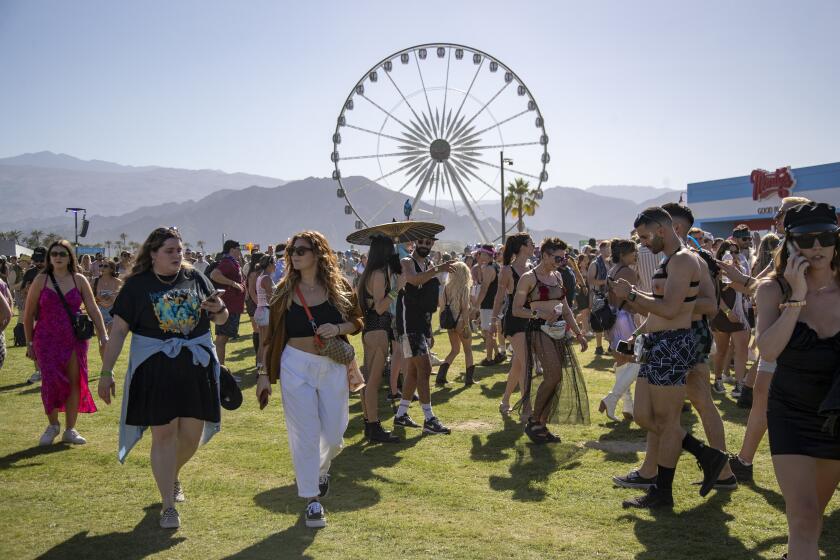PHOTOGRAPHY IN BRIEF : PLEASURES AND TERRORS OF DOMESTIC COMFORT <i> By Peter Galassi (Museum of Modern Art/Abrams: : $24.95, paper; 127 pp.) </i>
- Share via
The catalogue for a photography exhibition that originated at New York’s Museum of Modern Art and is now on view at L.A. County Museum of Art through Jan. 24, this book looks at the American home as depicted by 63 contemporary American photographers. Most of the 100 images included were made during the Reagan years, a time when our collective values were swinging to the right, and the family--which was functionally dismantled in the late 1960s--struggled to reassume the traditional form it took in the ‘50s. It was during that halcyon decade that the belief that things should and will always get better entrenched itself in the American psyche, and that’s one of the ideas this book calls into question.
Intended among other things to explore the interplay of private and public histories, this book raises several issues that we’ve all been grappling with for a while now. It’s old news that wealth equals privacy, and that a profound spiritual bankruptcy is eating away at the heart of consumerism and the cult of leisure. Nor will it come as a surprise to anyone that the home presents us with intimacies and connections that must be reckoned with whether we like them or not; the home is an extremely complex arena, and it’s not surprising that an undercurrent of ambiguous dread and fear courses through many of the pictures in this book.
Though unified in terms of subject matter, the work here is diverse in terms of style. The “snapshot”--a style of picture-taking that implies candor and authenticity--is the photographic style commonly associated with the domestic milieu--and curiously, the snapshot format tends to highlight the rigid role-playing that governs most families. Several of the artists included here--Philip-Lorca Dicorcia, Gregory Crewdson, Bruce Charlesworth--create artfully staged “snapshots,” that come off as enervated and bloodless next to the authentic candids on accompanying pages. Some of these staged photos seem tinged with cruelty--Tina Barney makes the upper-class people she photographs look repulsive, as does Joel Sternfeld--and the Post-Modernists included (Cindy Sherman, Laurie Simmons, Frank Majore, Ken Botto) don’t come off well either. Their work feels contrived and arch.
Peter Galassi’s essay is strange. In presenting the domestic milieu as a “new” subject, he cites the brilliant photographer William Eggleston as having opened up this territory in 1976 with his landmark photo essay, “William Eggleston’s Guide.” Though Eggleston is far and away the most gifted artist in this book (his 1972 photograph of a neatly laid dinner table in Sumner, Mississippi is absolutely terrifying), he seems a rather arbitrary starting point for Galassi’s theory. Galassi also comments that the effectiveness of the kind of socially conscious photography practiced by the FSA has waned (a highly debatable point), and discourages a sociological reading of this book, which he admits isn’t racially, ethnically or economically representative of contemporary America. So, what is it representative of? Galassi’s favorite photographers? There are lots of great pictures in this book, but editorially speaking, Galassi took his idea out of the oven too soon.
More to Read
The biggest entertainment stories
Get our big stories about Hollywood, film, television, music, arts, culture and more right in your inbox as soon as they publish.
You may occasionally receive promotional content from the Los Angeles Times.










